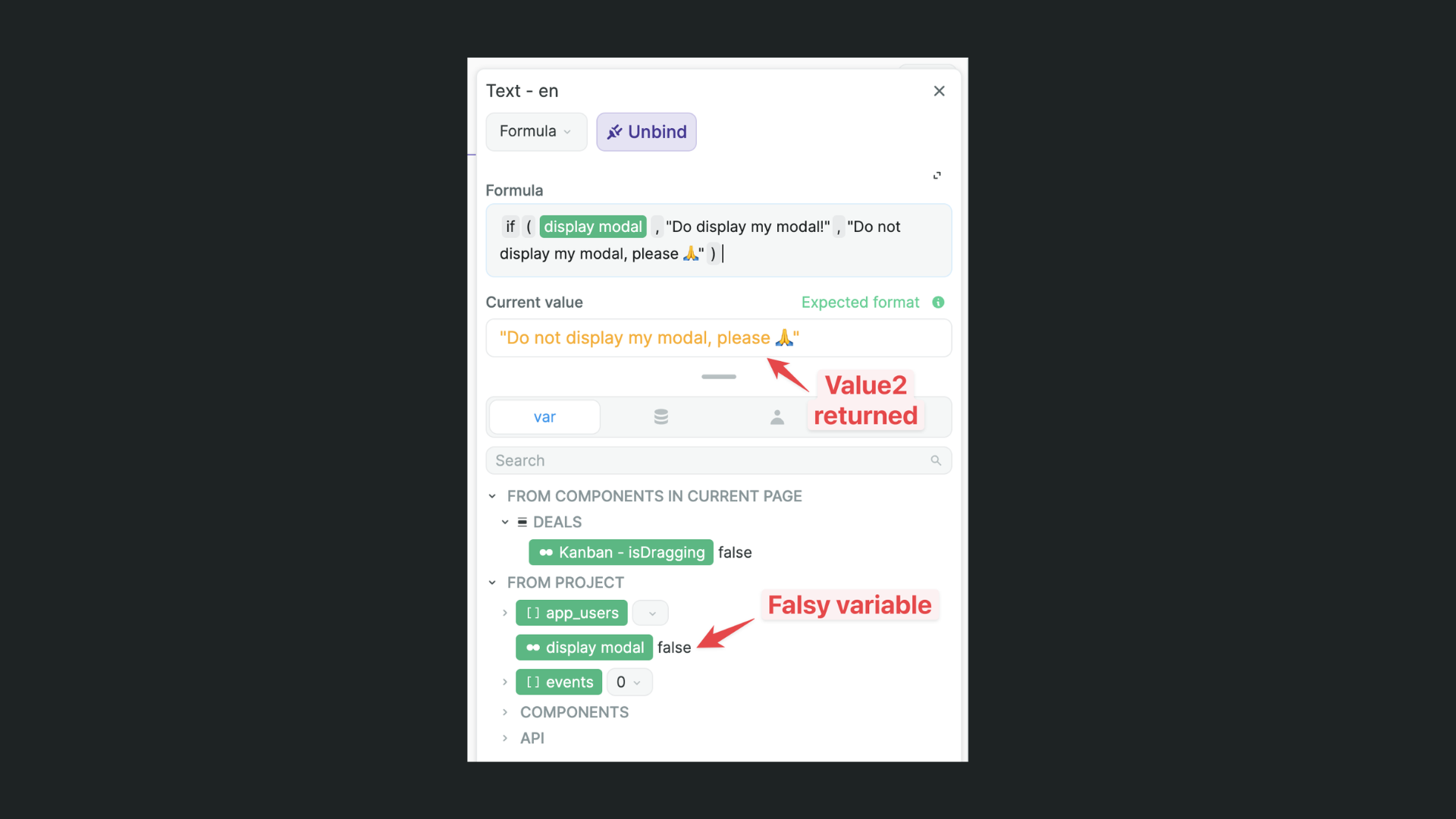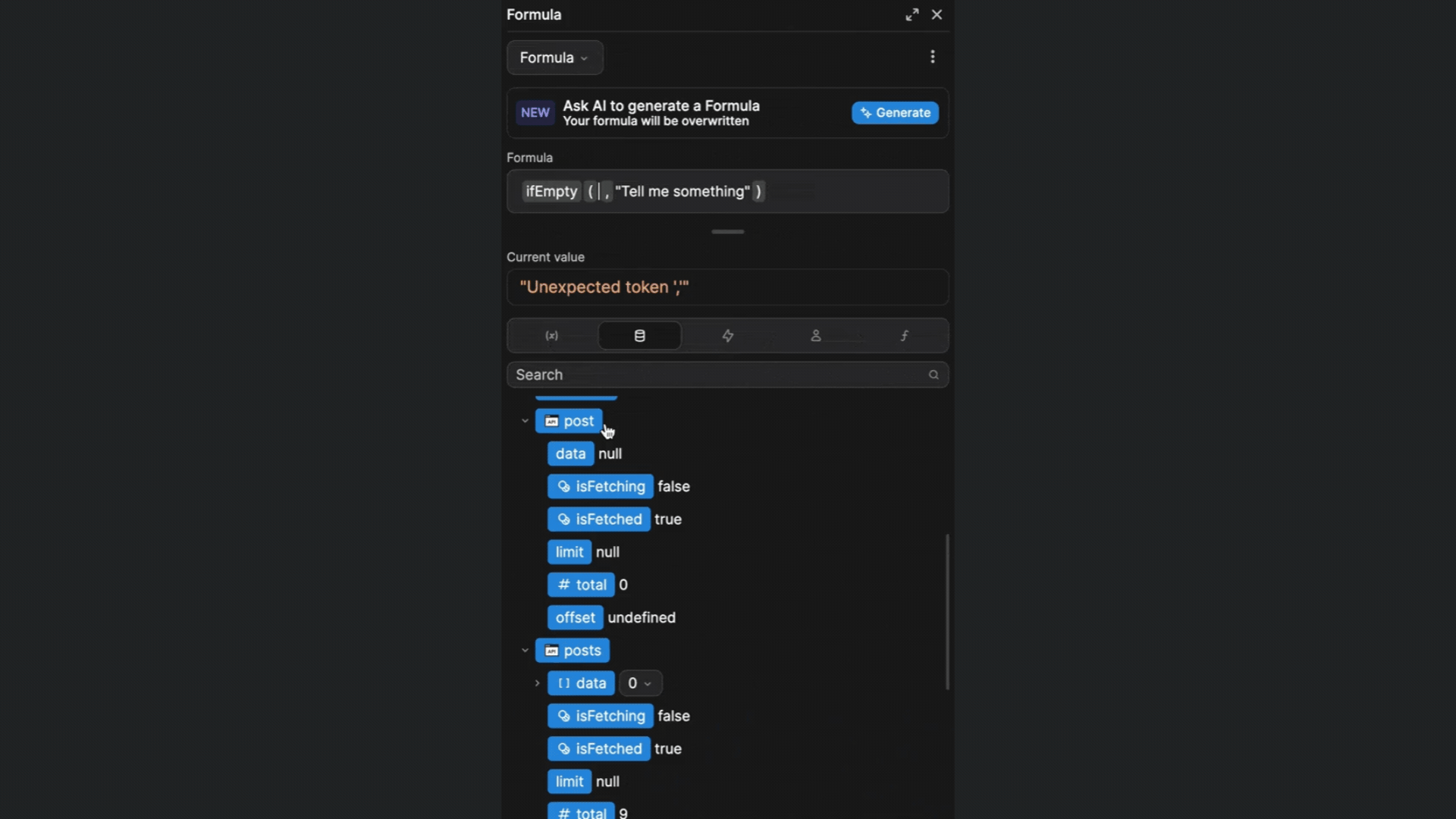Appearance
Conditional formulas
Conditional formulas are a way to test for truthiness or falsiness of variables or comparisons and return a different value according to this.
if
if takes 3 arguments, in order:
conditionthe variable or comparison to test truthiness onvalue1the value to return if the condition is truthyvalue2the value to return if the condition is falsy
Example
Here, we're using the if formula with a variable (display modal) as a condition. The formula will test if the varibale is true, and because it's false in this case, it'll return the second value.

ifEmpty
Use case
The ifEmpty formula is used to check if a given value is empty or not.
If the value is empty, it returns a specified fallback value. If the value is not empty, it returns the original value.
Syntax
The basic syntax of the ifEmpty formula is: ifEmpty(first_parameter, second_parameter)
- The first parameter is the value you want to check.
- The second parameter is the value to return if the first parameter is empty.
Examples
Let's say you want to check if user_input is empty and return "Default Value" if it is, the formula would be: ifEmpty(user_input, "Default Value")
- If
user_inputhas a value, the formula will return that value. - If it is empty, it will return "Default Value".
Here's the ifEmpty formula in action to check if a collection has returned items or not:

not
The not formula takes a variable or camparison, and return the opposite boolean value.
Ok, so what does it means? 😆
If a variable or comparison is truthy, it will return false. If a variable or comparison is falsy, it will return true.
So, this formula is useful when you need to invert a condition.
Example
In this example, we apply not to the display modal from before, which is false. So the return value is true.

If we take back the example from the if formula, it will now return the first value as the comparison is now not(false), so true.

switch
The switch formula takes an expression, then checks its equality with each value and return the matching result.
Example
Here, switch takes the variable user location as a an expression, which equals to "USA". It'll then loop over values, match the one which equals "USA" too, and return the matching value, which is Hello from the US 👋".


